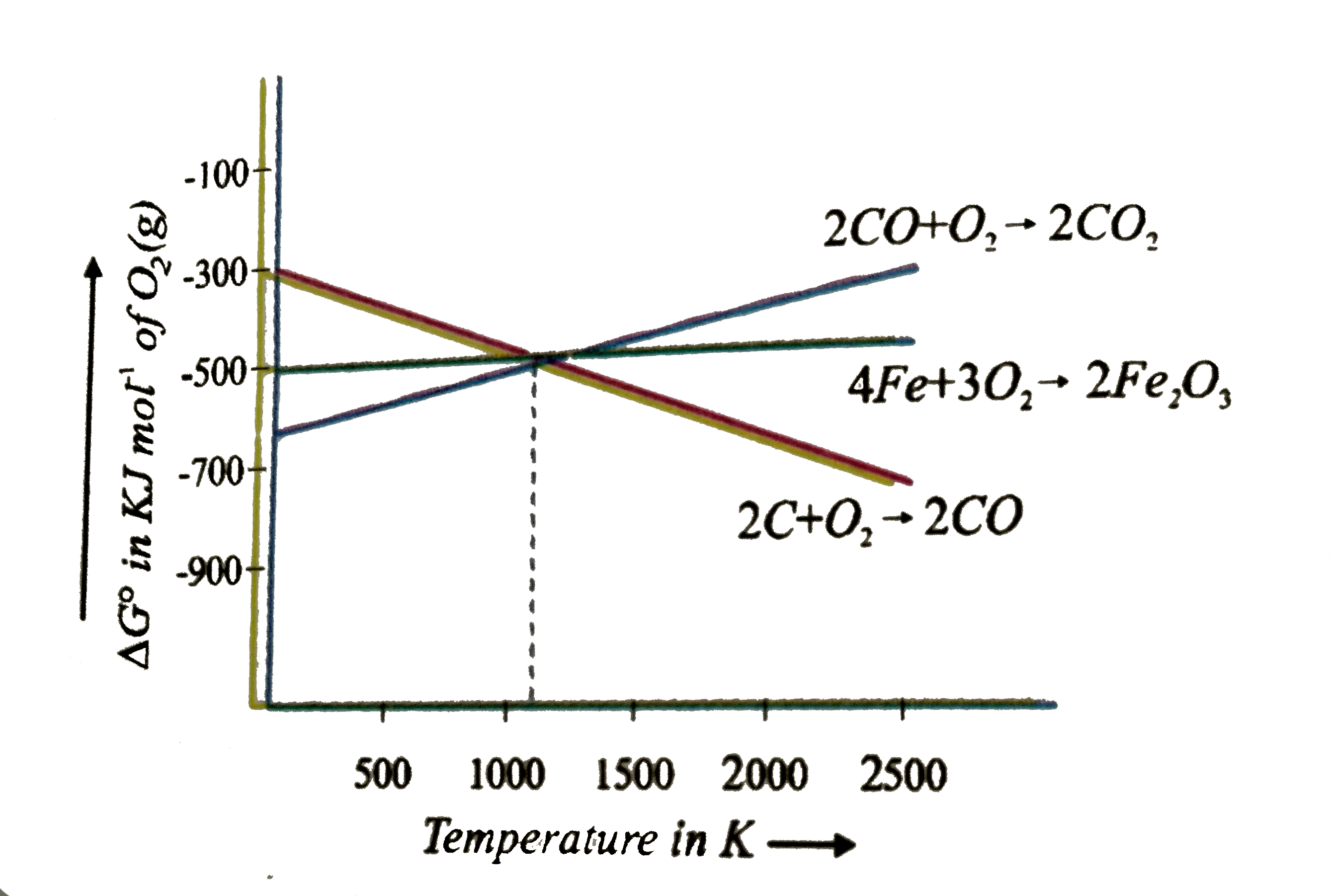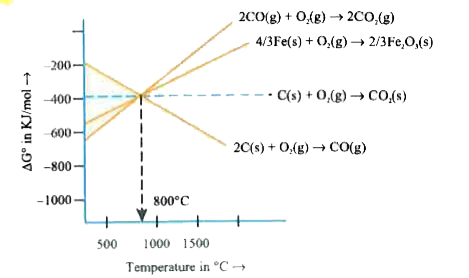Correct statements from the graph

I) Above 1073 K,ΔG0 for the formation of F2O3 is less negative than ΔG0 for the formation of CO from carbon
II) Above 1073K, Carbon can reduce Fe2O3
III) Below 1073K, CO can reduce Fe2O3
IV) In blast furnance, reduction of Fe2CO3 occurs in different temperature ranges with below 1073K by CO (or) above 1073 K by carbon
A
Only I
B
I,II only
C
I,II,III only
D
All
Text Solution
The correct Answer is:4
|
Similar Questions
Knowledge Check
Correct statements form the graph

I) Above 1073K, ΔG0 for the formation of Fe2O3 is less negative than ΔG0 for the formation of CO from carbon
II) Above 1073K, Carbon can reduce Fe2O3
III) Below 1073K, CO can reduce Fe2O3
IV) In blast furnace, reduction of Fe2O3 occurs in different temperature ranges with below 1073K by CO (or) above 1073K by carbonAOnly IBI, II onlyCI, II, III onlyDAllDirect reduction of Fe2O3 by CO is possible at temperature.
Aless than 1123 KBequal to or less than 1123 KCmore than 1123 KDequal to or more than 1123 K.Direct reduction of Fe2O3 by Carbon is possible at temperature.
Aless than 1123 KBequal to or less than 1123 KCmore than 1123 KDequal to or more than 1123 K.
Mention the temperature at which carbon can reduce Fe2O3 in blast furnace.
View SolutionHow many moles of iron can be made from Fe2O3 by the use of 16 mol of carbon monoxide in the following reaction :
Fe2O3+3CO→2Fe+3CO2
View SolutionCarbon cannot reduce Fe2O3 to Fe at a temperature below 983K because
View SolutionCabon cannot reduce Fe2O3 to Fe at a temperature below 983K because.
View SolutionThe reduction of Fe2O3 to Fe by CO occurs arround __________.
View Solution
